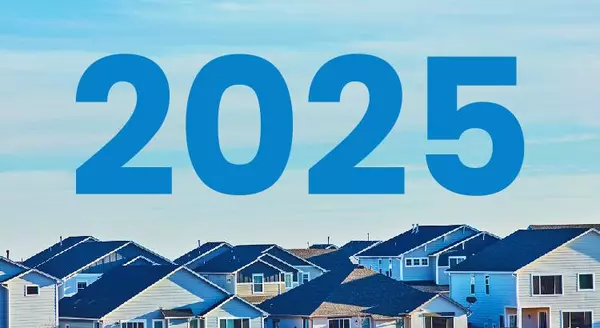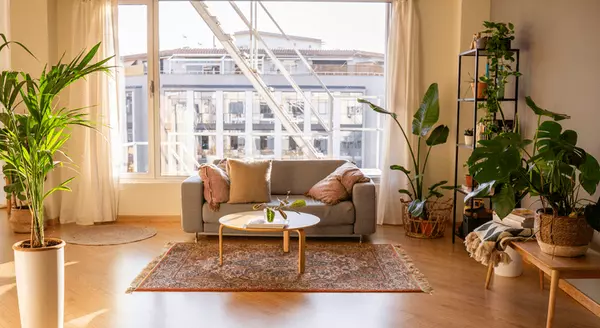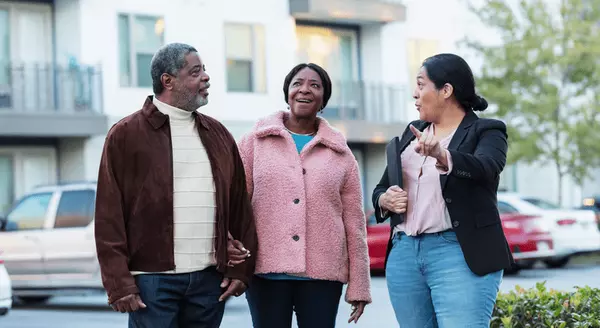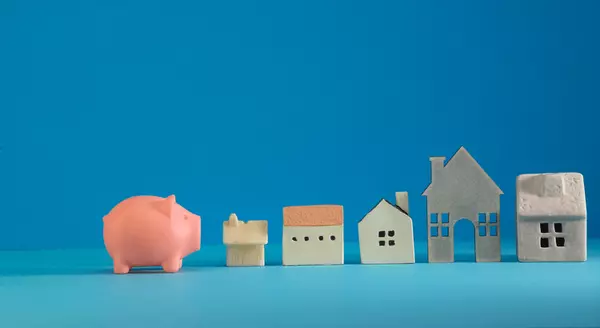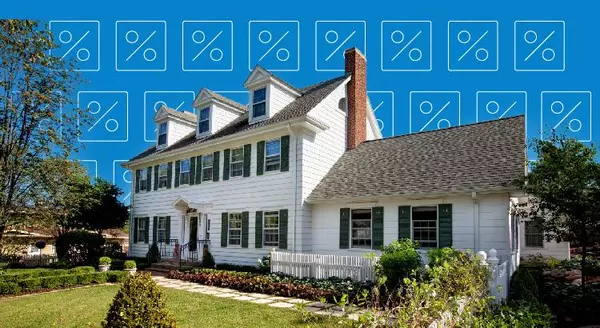![The First Step: Getting Pre-Approved for a Mortgage [INFOGRAPHIC],KCM Crew](https://img.chime.me/image/fs/chimeblog/20240313/16/w600_original_5b4e4020-05c6-451f-aefa-87d421b63e7a-png.webp)
The First Step: Getting Pre-Approved for a Mortgage [INFOGRAPHIC]
Some HighlightsIf you’re looking to buy a home in 2024, getting pre-approved is a key piece of the puzzle. Mortgage pre-approval means a lender checks your finances and decides how much you’re qualified to borrow.As more buyers re-enter the market, it’ll help you make a strong offer that stands out from the crowd.Talk to a trusted professional to learn more and begin your homebuying process today.

Why We Aren't Headed for a Housing Crash
If you’re holding out hope that the housing market is going to crash and bring home prices back down, here’s a look at what the data shows. And spoiler alert: that’s not in the cards. Instead, experts say home prices are going to keep going up.Today’s market is very different than it was before the housing crash in 2008. Here’s why.It’s Harder To Get a Loan Now – and That’s Actually a Good ThingIt was much easier to get a home loan during the lead-up to the 2008 housing crisis than it is today. Back then, banks had different lending standards, making it easy for just about anyone to qualify for a home loan or refinance an existing one.Things are different today. Homebuyers face increasingly higher standards from mortgage companies. The graph below uses data from the Mortgage Bankers Association (MBA) to show this difference. The lower the number, the harder it is to get a mortgage. The higher the number, the easier it is:The peak in the graph shows that, back then, lending standards weren’t as strict as they are now. That means lending institutions took on much greater risk in both the person and the mortgage products offered around the crash. That led to mass defaults and a flood of foreclosures coming onto the market.There Are Far Fewer Homes for Sale Today, so Prices Won’t CrashBecause there were too many homes for sale during the housing crisis (many of which were short sales and foreclosures), that caused home prices to fall dramatically. But today, there’s an inventory shortage – not a surplus.The graph below uses data from the National Association of Realtors (NAR) and the Federal Reserve to show how the months’ supply of homes available now (shown in blue) compares to the crash (shown in red):Today, unsold inventory sits at just a 3.0-months’ supply. That’s compared to the peak of 10.4 month’s supply back in 2008. That means there’s nowhere near enough inventory on the market for home prices to come crashing down like they did back then.People Are Not Using Their Homes as ATMs Like They Did in the Early 2000sBack in the lead up to the housing crash, many homeowners were borrowing against the equity in their homes to finance new cars, boats, and vacations. So, when prices started to fall, as inventory rose too high, many of those homeowners found themselves underwater.But today, homeowners are a lot more cautious. Even though prices have skyrocketed in the past few years, homeowners aren’t tapping into their equity the way they did back then.Black Knight reports that tappable equity (the amount of equity available for homeowners to access before hitting a maximum 80% loan-to-value ratio, or LTV) has actually reached an all-time high: That means, as a whole, homeowners have more equity available than ever before. And that’s great. Homeowners are in a much stronger position today than in the early 2000s. That same report from Black Knight goes on to explain:“Only 1.1% of mortgage holders (582K) ended the year underwater, down from 1.5% (807K) at this time last year.”And since homeowners are on more solid footing today, they’ll have options to avoid foreclosure. That limits the number of distressed properties coming onto the market. And without a flood of inventory, prices won’t come tumbling down. Bottom LineWhile you may be hoping for something that brings prices down, that’s not what the data tells us is going to happen. The most current research clearly shows that today’s market is nothing like it was last time.

How to Make Your Downsize Feel Like Home
Photo by John-Mark Smith Downsizing your home is a great idea for the majority of seniors. With a smaller home, you have less upkeep. A smaller home also means you don’t pay as much for utilities, insurance and taxes. Furthermore, it gives you the freedom to move to an area that is more accessible, has plenty of amenities and makes life generally easier throughout retirement. If you’ve recently downsized, it may feel weird walking into a new house after spending years in your previous one. While it can take time for a house to feel like a home, you can expedite the process a bit by adding a few touches that make the place cozier. Local real estate expert Shirley Smith explains how. Reduce Clutter Chances are you did a big cleanout of your belongings before you moved. But it’s always possible you didn’t get rid of enough for it all to fit in this smaller property. While you may think being surrounded by your belongings will make you feel more at home, it’s more likely the opposite is true. Clutter has the power to make us feel depressed and anxious -- not exactly the foot on which you want to start off your new life. Rather than stressing over clutter -- and about getting rid of things -- simply rent a self-storage unit where you can hold boxes containing non-essential items you don’t need on-hand. With a little organization of your boxes and some quick online research, you can find a fairly inexpensive unit in your area. And when the time comes to sort those surplus items, consider donating them to a charity of your choice. Refresh the Walls A smaller space doesn’t need to feel cramped or heavy, and your wall colors can play a big part in ensuring your rooms are airy and light. It’s best to use light colorswith some contrast to open up a room. And if you elect to go with wallpaper, fight the urge to use small patterns; MyDomaine explains large, bold patterns can actually make a space feel larger. If you aren’t completely sure, removable patterns are the way to go. You can even test the wallpapers you like with pattern swatches. And once you’ve changed up the walls, you’ll be ready to dive into smaller decor items. Update Your Security Even if the previous owners took pains to ensure your new home is safe, it’s wise to do a once-over yourself. Are there areas where burglars can easily hide? If so, add some thorny bushes near windows or entrances as deterrents. What about the security system? If you have one installed, go ahead and set up an account with the company that offers monitoring. Otherwise, have a new system set up or add a security camera feature. Remember to also have your doors re-keyed. To ensure you are the only one with access, new locks and new keys can bring extra peace of mind. When it comes to a security system or new lock installation, connect with local professionals with stellar reviews and affordable prices by searching a site like Angi. Just be sure to ask about experience, qualifications and warranties. Add Some Life Buying a houseplant (or five!) is a great way to make a connection between you and your new place. Plants are inexpensive decor that serve more than one purpose. They help keep the air clean and remove indoor pollutants. People with plants in their home tend to get sick less often because their air contains fewer allergens and dust. This helps them sleep better at night and feel better during the day. Plants are great for your mental health, too. They are known to help relieve depression, reduce stress, boost productivity and improve focus. Best of all, houseplants are fairly inexpensive; you can add an easy-to-grow philodendron to your home for around $22. If your thumb is more black than green, there are other low-maintenance houseplants that you can find at your local nursery: Chinese evergreens Ficus bonsai trees Pothos plants Fiddle leaf figs Peace lilies Cacti and succulents Snake plants Lucky bamboo Weeping figs Aloe vera African violets Paddle plants Retirement is a great time for downsizing your house and belongings. It has many benefits, but sometimes it can take a while for a new place to feel like home. To help expedite the process, make sure your home is uncluttered and tidy. Change the walls to make the most of your space, then add some visuals like blankets and houseplants throughout to ramp up the coziness factor. These simple fixes will help you settle right in! Need help selling your home? Shirley Smith with Coldwell Banker West can help! Call 619-559-6548 or email shirley@shirleysmith.com today.
Categories
Recent Posts



